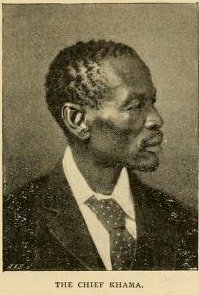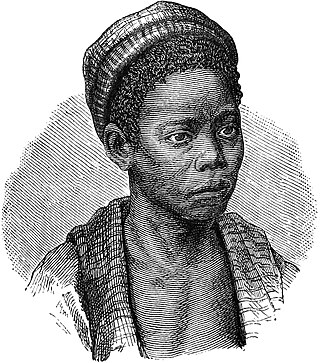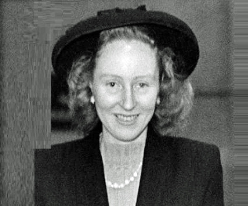Related Research Articles

Botswana, officially the Republic of Botswana, is a landlocked country in Southern Africa. Botswana is topographically flat, with approximately 70 percent of its territory being the Kalahari Desert. It is bordered by South Africa to the south and southeast, Namibia to the west and north, and Zimbabwe to the northeast. It is connected by the Kazungula Bridge to Zambia, across the world's shortest border between two countries.
The Batswana, a term also used to denote all citizens of Botswana, refers to the country's major ethnic group. Prior to European contact, the Batswana lived as herders and farmers under tribal rule.

Khama III, referred to by missionaries as Khama the Good also called Khama the Great, was the Kgosi of the Bangwato people.

The Tswana are a bantu ethnic group native to Southern Africa. Ethnic Tswana made up approximately 85% of the population of Botswana in 2011.

Sir Seretse Goitsebeng Maphiri Khama, GCB, KBE was a Motswana politician who served as the first President of Botswana, a post he held from 1966 to his death in 1980.

The Bechuanaland Protectorate was a protectorate established on 31 March 1885 in Southern Africa by the United Kingdom. It became the Republic of Botswana on 30 September 1966.
Serowe is an urban village in Botswana's Central District. A trade and commercial centre, it is Botswana's third largest village. Serowe has played an important role in Botswana's history, as capital for the Bamangwato people in the early 20th century and as birthplace of several of Botswana's presidents. More recently it has undergone significant development as the town and as Botswana continues to grow.

Palapye is a growing town in Botswana, situated about halfway between Francistown and Gaborone. Over the years its position has made it a convenient stopover on one of Southern Africa's principal north–south rail and road routes.

Ruth Williams Khama, Lady Khama was the wife of Botswana's first president Sir Seretse Khama, the Paramount Chief of its Bamangwato tribe. She served as the inaugural First Lady of Botswana from 1966 to 1980.
Shoshong is a town in Botswana, formerly the chief settlement of the eastern Bamangwato.

Tshekedi Khama was the regent-king of the Bamangwato tribe in 1926 after the death of Sekgoma II.

Tshekedi Stanford Khama is a Botswana politician. He was MP for Serowe West from 2008 to 21 April 2023. He was automatically disqualified from the National Assembly after missing two consecutive sessions because of his self-imposed exile to South Africa.
The history of Gaborone began with archaeological evidence in the area around Gaborone dating back to 400 BCE, and the first written accounts of Gaborone are from the earliest European settlers in the 19th century. Since the 1960s, when Botswana gained its independence from Britain and Gaborone became the capital, the city has grown from a small village in the Botswana scrubland to a major center in southern Africa.
The Independence Day of Botswana, commonly called Boipuso, is a national holiday observed in Botswana on September 30 of every year. The date celebrates Botswana's Declaration of Independence from the United Kingdom on September 30, 1966.

A United Kingdom is a 2016 biographical romantic drama film directed by Amma Asante and written by Guy Hibbert, based on the true-life romance of Seretse Khama, heir to the throne of the Bangwato Tribe in Serowe – one of many tribes found in then Bechuanaland Protectorate – with his wife Ruth Williams Khama. David Oyelowo and Rosamund Pike portray Seretse and Ruth, respectively.
Donald Leungo Gosego Molosi is a Botswana actor, writer and playwright. Molosi debuted off-Broadway in 2010 as Philly Lutaaya in Today It's Me making him the first Motswana to perform off-Broadway. In 2011, Molosi won the Best Short Solo Award at United Solo Theatre Festival for his performance as Seretse Khama in Blue, Black and White. In 2013, Molosi returned off-Broadway to perform Motswana: Africa, Dream Again. He played supporting roles in the films A United Kingdom (2016) and Given (2009). As a playwright, Molosi has published a collection of his original off-Broadway plays, which include We Are All Blue, Blue, Black and White and Motswana: Africa, Dream Again in 2016.

Semane Setlhoko Khama (1881–1937) was a mohumagadi of the BaNgwato Kingdom in the Bechuanaland Protectorate. Educated in a missionary school, she became a teacher and upon her marriage to Khama III continued to press for education for the BaNgwato. A proponent of modern medicine, she was influential in bringing modern midwifery to the area. As a devout Christian, she encouraged women's involvement in the church and the Woman's Christian Temperance Union.
The Khama III Memorial Museum is a museum located in Serowe, Botswana. The museum is dedicated to the history of the Khama family and Serowe.
The History of Botswana includes its pre-state history, its colonial period as the Bechuanaland Protectorate, and its modern history as a sovereign state.
References
- ↑ dijit.net. "'Botswood' sees film production start to blossom in Botswana | Balancing Act". Africa. Archived from the original on 2021-10-28. Retrieved 2019-12-22.
- 1 2 3 "Botswana Cinema Studies". thuto.org. Retrieved 2019-10-05.
- 1 2 "History of Film in Southern Africa | Southern African Cinematography 1913 - present". southernafricancinema.wordpress.com. Retrieved 2019-10-05.
- 1 2 "Botswana Cinema Studies". thuto.org. Retrieved 2019-10-05.
- ↑ "Botswana Cinema Studies". thuto.org. Retrieved 2019-12-22.
- ↑ "AFRICAN DOMAIN OF RUTH WILLIAMS". Youtube.com.
- ↑ "The African Domain of Ruth Williams". British Universities Film & Video Council.
- 1 2 "Botswana Cinema Studies". thuto.org. Retrieved 2019-12-22.
- ↑ "Botswana (Bechuanaland) - African Studies". Oxford Bibliographies. Retrieved 2019-12-22.
- ↑ "Thokolosi man vows to stay away from controversy".
- ↑ "Batswana audience and the 'Thokolosi' television drama controversy". Marang: Journal of Language and Literature (Vol. 17 No. 1 (2007)). doi:10.4314/marang.v17i1.39312.
{{cite journal}}:|issue=has extra text (help) - ↑ Bellafante, Ginia (2009-03-26). "Unusual Sleuth, Unusual Setting". The New York Times. ISSN 0362-4331 . Retrieved 2022-07-04.
- ↑ "'Ladies' Detective' film brings Tinsel Town to tiny Botswana". Christian Science Monitor. 2007-08-01. ISSN 0882-7729 . Retrieved 2022-07-04.
- 1 2 "Botswana's direct-to-DVD movies gaining popularity". Sunday Standard. February 2, 2009.
- ↑ "Botswana: Comedian, Phongo Proves There's Life After Radijo". AllAfrica.com. 12 August 2009.
- ↑ "Colors TV Drama thrills Batswana". Weekend Post. 23 October 2018.
- ↑ "Colours exposes SA viewers to beauty and challenges of Botswana". Sowetan Live. 12 September 2023.
- ↑ "Logaga Lwa Ditiragalo". logaga.
- ↑ "LOGAGA LWA DITIRAGALO REVIVES PROMOTES CULTURE". Daily News. 11 Feb 2024.
- ↑ "TV Show explores Tswana culture". Weekend Post. 6 February 2024.
- ↑ "New Capitol Cinemas". newcapitolcinema.co.bw. Archived from the original on 2021-10-26. Retrieved 2019-12-22.
- ↑ "Movie Theaters in Gaborone, Botswana". Cinema Treasures. Retrieved 2019-12-22.